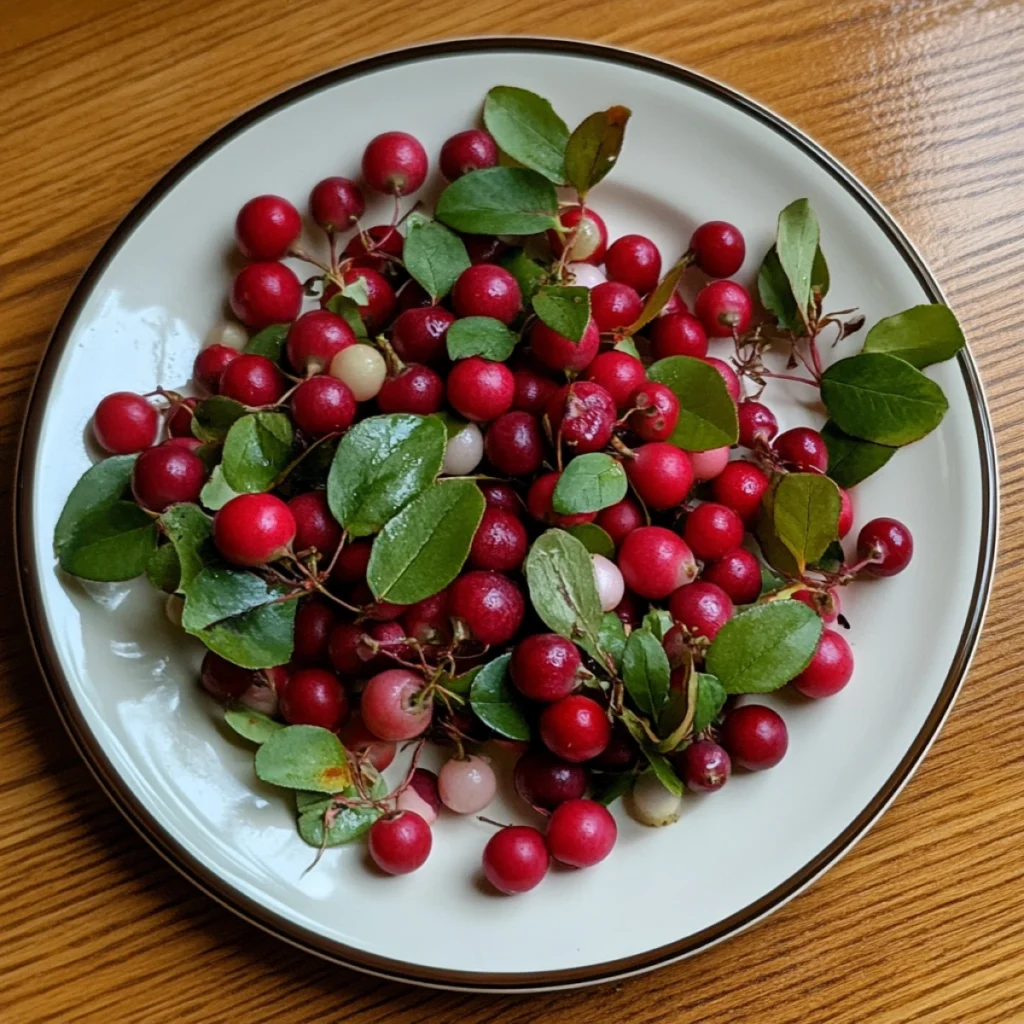
Creeping wintergreen (Gaultheria procumbens) is a small, evergreen plant found in North American forests. With its glossy green leaves and bright red berries, it’s a beautiful addition to the forest floor. But is this plant edible? In this article, we explore the safety of consuming creeping wintergreen, its nutritional value, and the best ways to use it in both culinary and medicinal practices.
For additional ideas on incorporating wild edibles into your kitchen, check out our post on Creative Sourdough Discard Uses and Recipes.
Is Creeping Wintergreen Safe to Eat?
Yes, creeping wintergreen is edible, but with certain precautions. The bright red berries are generally safe to eat and have a minty flavor reminiscent of wintergreen gum. However, consuming the leaves in large amounts can be harmful due to the presence of methyl salicylate, which is chemically similar to aspirin and toxic in large doses. For this reason, it’s best to consume the plant in moderation.
For more on foraging responsibly and ensuring safety, see our guide on Sustainable Foraging Tips.
Nutritional and Medicinal Benefits of Creeping Wintergreen
Creeping wintergreen has been used traditionally for both food and medicine. The berries are rich in vitamins, particularly vitamin C, and can be a useful source of nutrients in the winter months when other fruits are not readily available.
Medicinal Benefits:
- Pain Relief: The methyl salicylate found in wintergreen leaves is similar to aspirin and has been used to treat muscle aches and headaches.
- Respiratory Health: Wintergreen tea made from the leaves can help clear nasal passages and support respiratory health.
- Natural Breath Freshener: Chewing the leaves can act as a natural mouth freshener, thanks to their minty flavor.
For more on the traditional uses of this plant, visit Traditional Medicinal Uses of Wintergreen.
Identifying Creeping Wintergreen in the Wild
Creeping wintergreen is relatively easy to identify once you know its key features. It’s important to ensure proper identification, as it can be mistaken for other plants like partridgeberry.
Key Characteristics:
- Leaves: Small, shiny, dark green, and leathery.
- Flowers: White or pink bell-shaped flowers bloom in summer.
- Berries: Red berries appear in the fall and often last through winter.
If you are interested in learning more about similar plants and how to tell them apart, check out our post on Identifying Wintergreen and Its Lookalikes.
Foraging Tips: Where and When to Find Creeping Wintergreen
Creeping wintergreen thrives in acidic, shady soils and is commonly found in North American forests, especially under pine and hemlock trees. The berries are at their best from late fall to winter, and they often become sweeter after a frost.
Best Time to Forage:
- Late Fall through Winter: This is when the berries are ripe and flavorful. The cold weather enhances their sweetness, making them a delightful snack.
To ensure you’re foraging sustainably and preserving nature, check out Sustainable Foraging Tips.
How to Harvest and Use Creeping Wintergreen
Creeping wintergreen can be used in various ways, both in the kitchen and in home remedies. Here’s how to harvest and prepare it.
Harvesting:
- Berries: Gently pick the ripe red berries. The berries can be eaten fresh or frozen for later use.
- Leaves: The leaves can be harvested to make tea or for external use in homemade oils. However, avoid consuming large amounts of the leaves due to their methyl salicylate content.
Uses:
- Wintergreen Berry Sorbet: Blend frozen wintergreen berries with sugar and lemon juice for a refreshing sorbet.
- Wintergreen Tea: Steep the leaves in hot water for 5-10 minutes to make a mild tea. Limit consumption due to the presence of methyl salicylate.
- Wintergreen Oil: Infuse the leaves in olive oil to create a topical treatment for muscle aches.
Popular Recipes Using Creeping Wintergreen
Creeping wintergreen offers a minty flavor that works well in both sweet and savory recipes. Here are a few ideas to get you started:
1. Wintergreen Berry Sorbet
- Ingredients: Wintergreen berries, sugar, lemon juice, water.
- Instructions: Blend the ingredients and freeze to create a minty sorbet that’s perfect for a refreshing dessert.
2. Wintergreen Tea
- Ingredients: Fresh or dried wintergreen leaves.
- Instructions: Steep the leaves in hot water for a few minutes. Add honey for sweetness, if desired.
3. Wintergreen Infused Oil
- Ingredients: Wintergreen leaves, olive oil.
- Instructions: Infuse the leaves in oil for several weeks, then strain. The oil can be used topically for pain relief.
For more creative recipes, check out our guide on Creative Sourdough Discard Uses and Recipes.
FAQs: Is Creeping Wintergreen Edible?
1. Is creeping wintergreen safe to eat?
Yes, the berries are safe to eat, and the leaves can be used in moderation for tea. However, avoid consuming large amounts of the leaves due to the presence of methyl salicylate, which can be toxic in high doses.
2. Can you make tea from creeping wintergreen leaves?
Yes, wintergreen leaves can be used to make a mild tea. Just be cautious not to drink large quantities due to the methyl salicylate content.
3. When is the best time to forage for creeping wintergreen berries?
The best time to forage is from late fall through winter when the berries are at their ripest and sweetest, especially after frost.
Conclusion: Why Creeping Wintergreen is Worth Foraging
Creeping wintergreen is not only edible but also offers numerous benefits, from its nutritional value to its unique minty flavor. Whether you’re foraging the berries for a snack or using the leaves in home remedies, this wild plant is a great addition to your foraging repertoire. However, be mindful of its potential toxicity and use it in moderation.
If you’re looking for more tips on how to use wild plants in your cooking, don’t forget to check out our other guides, including How Do I Activate Sourdough Discard?.
